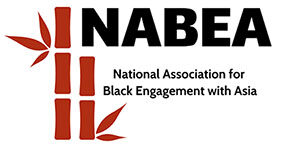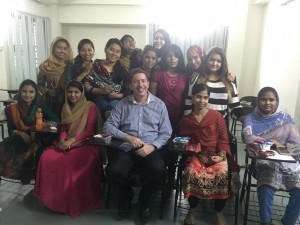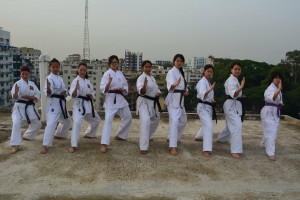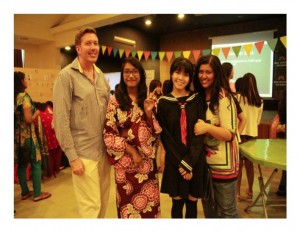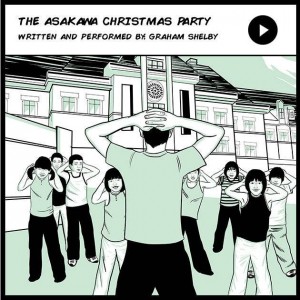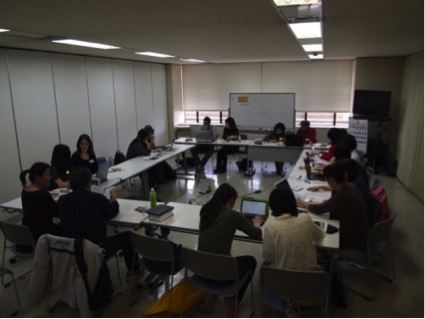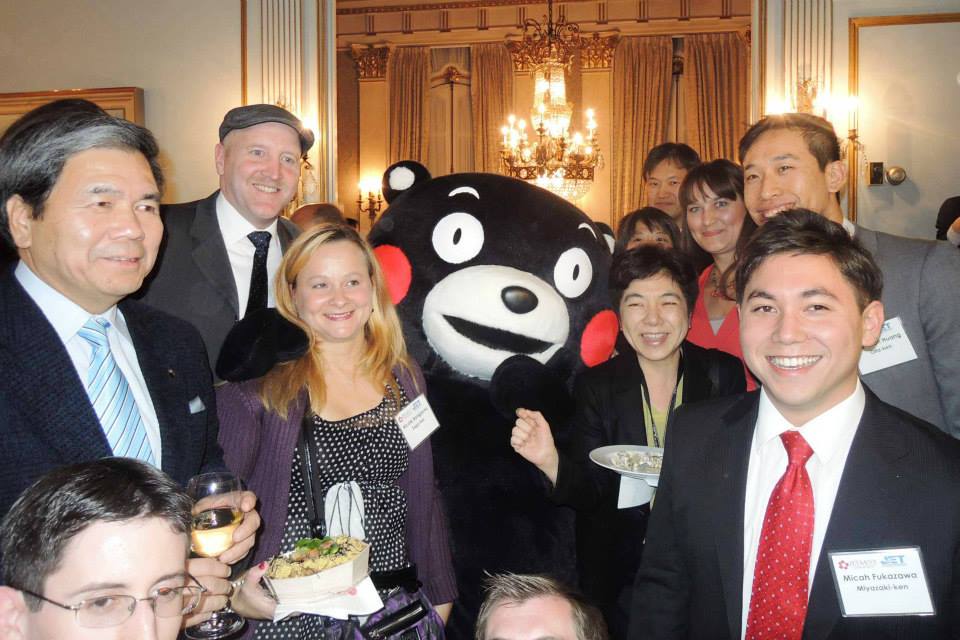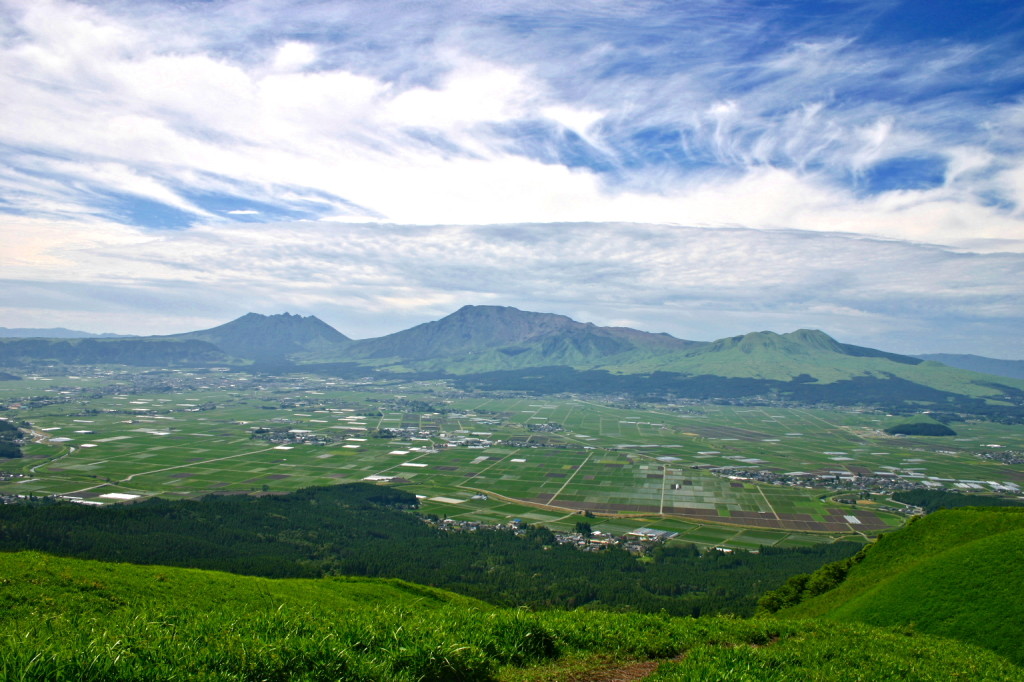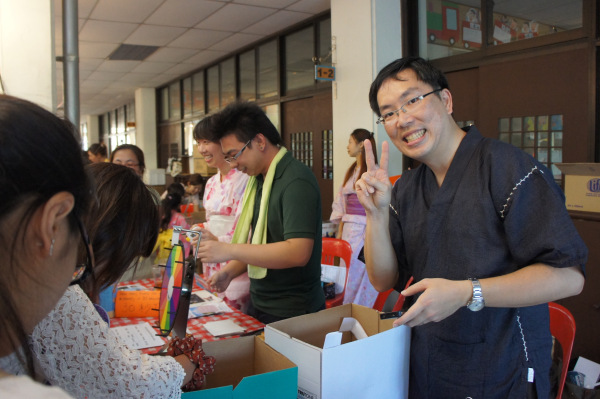Krewe of Japan Podcast E08 – Talking Sumo ft. Andrew Freund
Posted by: Doug Tassin (Fukushima-Ken ALT, 2007-2010 & Krewe of Japan Podcast Co-Host)
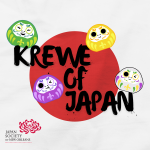
This week on the Krewe of Japan Podcast…
Just in time for the final weekend of the Spring Tournament/Haru Basho in Osaka, Doug & Nigel talk all things Sumo with Andrew Freund, director of USA Sumo and 2012 Martial Arts History Museum Hall of Fame inductee. Andrew shares his story of how he went from corporate English teacher in Japan to coordinating & facilitating high profile sumo events including the annual US Sumo Open & sumo appearances on ESPN SportsCenter & John Wick 2. He also shares in-depth insight into the sport that he’s learned and gained great appreciation for through his countless (if not daily) interactions with professional sumo legends.
The Krewe of Japan Podcast is a weekly episodic podcast sponsored by the Japan Society of New Orleans. Check them out every Friday afternoon around noon CST on Apple, Google, Spotify, Amazon, and Stitcher. Want to share your experiences with the Krewe? Or perhaps you have ideas for episodes, feedback, comments, or questions? Let the Krewe know by e-mail at kreweofjapanpodcast@gmail.com or on social media (Twitter: @kreweofjapan, Instagram: @kreweofjapanpodcast, & the Krewe of Japan Youtube Channel). Until next time, enjoy!
Do you know about NABEA (the National Association for Black Engagement with Asia)?
**************************
We recently learned about the National Association for Black Engagement with Asia (NABEA) which seeks to connect Black Asia specialists in both the public and private sectors. They also hope to increase the representation of Black Americans engaging with Asia. Through their programming, they work towards building a mutually beneficial economic, political, social, and cultural relationship between Black America and the Indo-Pacific region.
There seems to be a natural connection between the JET alumni community and NABEA. And in fact, we’re currently aware of four JET alumni who are also members of NABEA:
- Jennifer Butler (Shizuoka-ken, 2001-2004) – Manager of Student Relations for the Ashinaga Foundation and former JETAA USA Country Representative and JETAA chapter president
- Mya Fisher (Kanagawa-ken, 2000-2002) – Founder of Global Equity Forward, a strategic consulting and advisory company for international inclusion, diversity, and racial awareness.
- Jody Dixon (Yamanashi-ken, 2009-20014) – Program Manager for the American Association of State Colleges & Universities overseeing their China-US Rising Star Study Program
- Savannah Williams (Shizuoka-ken, 2018-2020) – a Community Manager and Event Coordinator for Startup Lady Japan
According to Fisher, “NABEA is an important and growing community of Black Americans who are specialists actively engaged in Asia. Their publicly accessible and searchable database of Black, Indo-Asia experts is a great addition to the continued work of increasing representation and inclusion in the U.S.-Japan community specifically, and the Indo-Asia region more broadly.”
If you are interested in joining NABEA, go to their website for more info: http://usnabea.org/
And if you’re already a member, feel free to post in the comments section below and let everyone know!
By Mark Flanigan, Nagasaki (2000-04)
As a JET alumnus, I look back fondly on the four years I spent living and teaching in Nagasaki Prefecture. Serving on JET was, quite literally, one of those “life-changing” experiences, as it confirmed my career path in the direction of public service and global education. In the 15 years or so since my time in Nagasaki, I have been lucky to have had international roles in the U.S. government, in higher education, and at a private, Japan-focused non-profit foundation. I was even fortunate enough to return to Japan a second time, to earn my MA in Peace Studies in 2012 through the Rotary Peace Center at International Christian University (ICU) in Tokyo. Later, I served in a variety of roles in Manhattan with JETAANY between 2012-16.
My most recent career stage brought me back into the classroom, albeit in a different role and a new part of Asia for me. I am currently serving as a WorldTeach Fellow volunteer in Chittagong, Bangladesh, at the Asian University for Women (AUW). It has been both a challenging and rewarding transition back into teaching, as I felt a bit rusty in the beginning and took a bit of time to get back in the groove. Also, my main experiences with Asia had been almost entirely focused on Japan, China, and Korea. For me, South Asian history and culture was something I knew very little about up until a couple of years ago. Being here, I realized how comparatively little I knew about the diverse cultures of the Indian subcontinent of Asia. Nonetheless, it has proven to be an extremely rewarding transition, personally as well as professionally.
Me with some of my Pathways students in Bangladesh
Through a friend in New York City, I had first learned about AUW back in 2015. She had been a WorldTeach Fellow here a few years before, volunteering and having a really significant educational and cultural experience. The more I heard about her time in Bangladesh, the more I thought it sounded like a great opportunity to get back in the classroom while making a positive contribution to education for women at a significant institution like AUW. While I definitely enjoyed my four years in Manhattan, working as a Program Director with the Japan ICU Foundation (日本国際基督教大学財団), I also felt ready to take on a new challenge. I applied and was happily accepted as a new volunteer with WorldTeach, and assigned to AUW for the 2016-17 academic year.
AUW was founded in 2008 as a regional hub to help educate underprivileged women throughout different regions of Asia and the Middle East. With a liberal arts curriculum that promotes critical thinking and women’s empowerment, it is a truly encouraging place for young women who have faced numerous challenges in life due to poverty, gender bias, and sectarian conflict. With 600 students (and over 400 alumnae) from 15 different countries, including Nepal, Bhutan, Myanmar, Vietnam, Cambodia, Sri Lanka, Afghanistan, Pakistan, Syria, Palestine, and others, AUW is an amazingly diverse place. The dynamic environment, small class sizes, and daily interaction of people with many different ideas, perspectives, and cultures makes it an esteemed center of higher education in South Asia.
However, I almost missed my chance to be here. Less than one month before I was due to arrive at AUW, we heard the news of the terrible attack in Dhaka, the capital city of Bangladesh. All I knew was that international residents of the city (and their local friends and colleagues) had been targeted specifically in a vicious terror strike. The attackers, while a definite minority in terms of the general population, were sending a very clear and deadly message. Although the attack did not take place in Chittagong, it was great cause for concern among both WorldTeach and AUW staff, as well as present and future volunteers. At that time, it was not clear whether we would still be able to serve in Bangladesh, or how the program might proceed. Many safety protocols would need to be analyzed and revised before a final decision could be made. In the end we were still given the option to come, which I was definitely happy to hear.
I have now been here for seven months, teaching two different groups of students over the autumn and now spring terms. My classes are part of the Pathways for Promise Program at AUW, which is the recently developed entry point for women who have not had as much formal preparation to succeed in higher education. Many of them have come as former workers from the garment factories of Bangladesh, while others are daughters of Grameen Bank loan recipients, refugees from the persecuted Rohingya community, as well as indigenous minorities from the Chittagong Hill tracts region. In addition to Bangladeshis, Pathways students have come from Afghanistan, Cambodia, and Myanmar. They will take classes for approximately one year in Reading and Writing as well as Listening and Speaking, and also study Math and IT while participating in Community Time and Social Mentoring workshops and events.

A lovely display of Bengali cuisine
If they complete the Pathways Program successfully and meet all the exam requirements, they will advance to the one-year Access Academy and then an additional three years of undergraduate study at AUW. In all, the successful ones will graduate in five years with their bachelor’s degree in hand. Against all odds, this is their big chance to earn their college degree. Without the encouragement and funding support to match their own amazing dedication, it would most likely be impossible. It will not be easy for them. Many are far away from home and spend almost all of their time on the small but secure campus. They live in dormitories with 2-5 students per room, eat in the dining hall, and take all their classes together, so there is very little time for privacy or quiet reflection. Nonetheless, they are very eager to learn and make the most of this unique opportunity they have been granted.
It goes without saying that my students inspire me each and every day. Teaching them is really one of the biggest joys of my life here, and in many ways takes me back to my first experience teaching overseas in Japan. Although those two times are separated by about 15 years and many more miles, there are also some interesting parallels between them. Of the many things I have discovered over my time here thus far at AUW, one of the most interesting has been the surprising number of existing connections here between Bangladesh and Japan. As a former JET who later studied at ICU and worked to promote increased U.S.-Japan ties, it’s been a really pleasant surprise to find out about and help to build on these great bilateral bonds of friendship.
The first one, I discovered quite by accident. In the early part of the autumn semester, I was walking in the hallway outside of my office when I heard the distinct counts of “ICHI, NI, SAN, SHIIII!!” emanating from the level above. Intrigued, I climbed the staircase up to the next floor and was surprised to discover the gymnasium filled with perfect rows of students. They were in straight lines, balanced in strict stances, with fists alternately chambered by their side and then thrust forward in a crisp motion I instantly recognized. My mind wandered back to our small dojo in Hirado City, Nagasaki, where I spent countless hours drilling in those very same “kihon” movements. I was curious to find out more, so I made arrangements to return and observe a longer class in session.
It was then that I met Ms. Maria Chakraboty, their instructor, a remarkable woman from Bangladesh who has achieved her 5-Dan rank in Shotokan Karate. Maria serves as a real inspiration to her students, as AUW’s Associate Director of Physical Education and Karate instructor. Maria grew up in Chittagong, the same city where AUW is based, and faced hardships of her own due to people judging her negatively by her gender. She was strongly discouraged by others in her pursuit of Karate, but through the encouragement of her instructors, she has achieved a remarkable number of accomplishments. For her students, Maria is a living, breathing example of a successful adult woman, who has faced down discrimination and has continued her own personal growth through embracing the Japanese art of Karate. She has been able to impart her wisdom and experience to hundreds of young students through the years. Such is the wonderful environment of a cross-cultural, liberal arts university like AUW.
Maria (Center) training with some of her AUW students
In addition to Karate, there are other tangible bonds of kizuna between AUW and Japan. Attending the University’s Club Fair this past autumn, I was happy to learn that AUW students are involved in all kinds of social and academic club activities. Similar to Japan, students here balance their time between formal classes and organized clubs, like Model UN, Animal Welfare, a variety of sports, and other pursuits. Most interestingly to me, I discovered that there is a very active group of students on campus who are involved in the AUW Japan Circle Club! They are extremely genki and know an amazing amount of things regarding Japanese culture. They study Japanese on their own (as it is not taught here), read manga, watch anime, and even make their own kimono and other clothing by hand! Upon meeting them, I shared my experience as a JET alumnus and former ICU graduate student. They asked me to serve as their faculty advisor, to which I most happily agreed!
With some of the AUW Japan Circle Club students (and their hand-made clothing)!
I have been very happy to be working with them on various projects here this term. Most specifically, we have planned and organized a Japanese book drive among some of my colleagues and friends in Japan and Hong Kong. Through their kind and generous help, we have now received about seven boxes full of manga, books, magazines, language textbooks, and Japanese-English dictionaries from abroad! All of these were donated to the AUW library, so students can access them freely anytime. As none of our students have been able to visit Japan as of yet, they really love the chance to see any kind of “hon mono” firsthand. One Tokyo friend in particular also sent a variety of delicious Japanese candies, which were a big hit with the students! We are still interested in receiving any other items from Japan, if anyone would like to donate. Additionally, the students performed a number of Japanese songs (in Japanese) and dances for our recent Lunar New Year Festival. We hope to develop exchange partnerships with AUW and universities in Japan, in order to offer study abroad opportunities in both directions. Interestingly, at least one AUW alumna is now studying in Japan, earning her Master’s degree at the United Nations University (UNU) in Tokyo!
Lastly, there is a very robust level of support for AUW in Tokyo. As part of the global support network for AUW students, a number of highly-accomplished and very influential donors make up the “Friends of AUW Japan” organization. Among them is Ms. Kathy Matsui,Vice Chair of Goldman Sachs Japan,who has a long and deep connection to AUW. In 2007, she was chosen by the Wall Street Journal newspaper as one of the “10 Women to Watch in Asia” for her work on the “Womenomics” theme, and serves as a board member of the AUW Support Foundation. Ms. Matsui and her husband, Mr. Jesper Koll, have been major donors to AUW since its inception, and they continue to look for ways to promote exchange between AUW and Japanese universities and companies. In addition, First Lady Akie Abe serves as an official Patron of AUW and has been actively involved with a number of fundraising efforts on behalf of the university in Tokyo over the past few years. Lastly, AUW has enjoyed very generous support through the past several years from a number of Japanese companies like HITACHI, MITSUI & CO., TOSHIBA CORPORATION, and UNIQLO.
First Lady Akie Abe (center) and Ms. Kathy Matsui (second from right)
In conclusion, I would say my time here in Bangladesh has been a wonderful journey thus far. In many ways, it’s a completely new (and sometimes bumpy) experience for me, living in South Asia and in a developing, Muslim-majority country for the first time. Culturally, it’s much different than what I was used to, but that’s been a good opportunity to broaden my own horizons and question my preconceived notions about life as well. My students in the Pathways for Promise Program specifically, and AUW students in general, have taught me so much and really inspired me through their own energy, resilience, and desire to learn. As a nice coincidence, this latest chapter in my career also brings me back to teaching and to Japan in many ways. I am happy to have so many “natsukashii” moments here, to help teach these remarkable young women, and also to be in a position to try and advance the relationships between people in Bangladesh and Japan. In some ways, it’s the most unexpected yet personally satisfying addition to my time here at AUW. I’m happy to make the most of all these fortuitous connections during my time here in Bangladesh and beyond.
=================================================================================
Mark Flanigan is currently a WorldTeach Fellow volunteer in Chittagong, Bangladesh, at the Asian University for Women (AUW). Mark served as an ALT in Nagasaki Prefecture from 2000-4, and later studied for his MA in Peace Studies as a Rotary Peace Fellow at the International Christian University (ICU) in Tokyo from 2010-12. After graduating from ICU in 2012, he spent four years working for the Japan ICU Foundation in NYC. He has also held leadership roles in the JET Alumni Associations of both New York and Washington, DC. He can be reached at markinmitaka(at)gmail.com

Help out with the annual Fukushima Calendar!
A request for help with this project from JET alum Ryan McDonald (Fukushima-ken):
This is the 4th year we are trying to produce the “This Is Fukushima” calendar that we send to world leaders, media, and royalty. We’ve received thank you notes from President Jimmy Carter, Prime Minister Stephen Harper, and even Her Majesty Queen Elizabeth.
- We take donations and use the money to produce the calendar and then pay for most of the shipping, although for the past 3 calendars the people creating out went out of pocket over $1,000 each.
- Here is a link to the current calendar in PDF form to see the style. Feel free to download it and print it out if you’d like. The actual calendars are professionally printed and look great.
- This link is a write up (in Japanese) about myself and the other people producing it.
- If you have any large photos of Fukushima please email us by October 31st this year. We prefer interesting places unique to Fukushima and not generic nature shots. We want people to say, “wow, I’d like to go see that.”
Photo criteria:
- – must have been shot in Fukushima-ken. It doesn’t matter when (so yes, pre-2011 pics are fine).
- – minimum 300dpi resolution (4000×3000 px) (or very close to it, but 72 dpi usually won’t work)
- – horizontal format is preferred
- Photos can be submitted via email to: ThisIsFukushima@gmail.com
Thanks in advance for your support!
—————————–
今日本語で :
愛する福島県の住民と以前住んでいた方へのメッセージ:
2016年の「This is Fukushima」カレンダーのために只今写真募集中!
写真の提出期限は10月31日までです。
募集する写真の基準:
〓 福島県内で撮られた写真。今年撮られた写真に限らず、もちろん2
〓 解像度の必要最小限は300dpi (4000x3000px)
〓 横向きの写真が望ましい
写真をメールで提出してください: ThisIsFukushima@gmail.com
よろしくお願いします!
Writer Graham Shelby (Fukushima 1994-97) recently teamed up with The Butcher’s Apron Radio Show to produce this full-on audio story (music, sound EFX, the whole thing) about a distinctly JET experience.
“The Asakawa Christmas Party” tells the true story of a complicated Christmas party Graham and a few other American JETs attended at a Japanese elementary school. It was complicated because…
a.) it took place on the anniversary of the Pearl Harbor attack.
and…
b.) the teachers asked them to teach “a traditional American Christmas dance.” (FYI – there aren’t any).
How’d it turn out? Doozo.
The story was produced as part of Selfridge and Co’s Reasons to Believe series of original Christmas tales. Graham has a few more Japan stories here.
The 113 Project: Tohoku Film Series
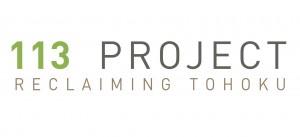
JQ Magazine: JQ&A with Trixie Cordova, Peace Boat US Volunteer Staff and World Up Education Director
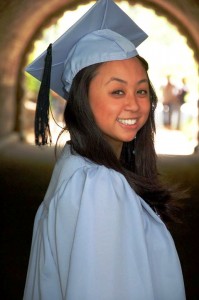
Trixie’s advice for new JETs: “Soak it in! Challenge yourself to try new things, explore the country, eat crazy foods, GET NAKED (at an onsen, anyway). Appreciate how different and preserved Japanese culture truly is, and don’t take your time abroad for granted. You were a chosen one, so embrace it!” (Courtesy of Trixie Cordova)
By Mark Flanigan (Nagasaki-ken, 2000-04) for JQ magazine. A member of the JET Alumni Association of New York’s board of directors, Mark is a program director at the Japan ICU Foundation in New York City and was also a Rotary Peace Fellow at ICU from 2010-12, during which time he volunteered for a tsunami relief mission in Ishinomaki after the terrible 3/11 tragedy. He can be contacted at mflanigan[at]jicuf.org.
Trixie Cordova (Shimane-ken, 2007-09) began volunteering with Peace Boat US in New York since last October. A civil society and non-profit organization, Peace Boat US works to promote peace, sustainable development, human rights and respect for the environment throughout the United States and the world through educational programs organized in partnership with the Japanese NGO Peace Boat, which carries out its main activities through a chartered passenger ship that travels the world on peace voyages.
At the same time, Cordova has served as education director for World Up, a non-profit organization based in Brooklyn that uses music, specifically hip-hop, and technology education to explore local and global issues affecting youth today. A graduate from Teachers College at Columbia University with a Master’s in International Educational Development, concentrating on Peace Education, Cordova has been quite active in JETAANY as well, serving on a career panel for recently returned JETs this past year. Prior to living and working in New York, she taught English in rural Japan for two years, where she first learned about Peace Boat while on the JET Program.
As a Peace Boat US volunteer, Cordova has been working toward creating opportunities for New York youth to participate in the Music and Art Peace Academy (MAPA) Program on board the ship. This summer, she will work closely with Unique Waters of World Up’s after-school music program “WU School” at the Brooklyn Community Arts and Media High School. Together they will lead music and leadership-based activities to promote cross-cultural understanding and to collaborate on a musical soundtrack to MAPA this summer.
JQ reached out to Cordova recently to ask her more about how her experiences in Japan and the Peace Boat-JET connection has led to this sea change in global education.
Thanks for taking the time to share your story, Trixie! Where and when were you placed on JET? Was it your first time in Japan?
Sure thing! I was an elementary and JHS ALT in Gotsu, Shimane, from 2007-09. Shimane’s claim to fame is that it isn’t famous—check out their unofficial mascot, Yoshida-kun, as proof! It was definitely my first time to Japan—I never studied the language or the culture before setting foot in Tokyo for JET orientation.
What was perhaps the biggest misconception you had about Japan before your experience on JET?
I honestly didn’t have very many preconceived notions about Japan, especially given that my decision to do JET was primarily just focused on moving abroad ANYWHERE, not necessarily because of any romanticized ideas I had about Japanese culture. Having said that, I think the biggest misconception I had about Japan was probably that the entire country had access to high-end technology and modern homes. I quickly realized that while that might be true in places like Tokyo, that was definitely not the case in rural Japan.
How many other JETs were in your town or local area?
In Gotsu, there were three ALTs—two JHS’s (dividing up the 10 elementary schools and four JHS), and one HS. I believe there was also a CIR, but ours was from China, and never really participated in JET-related events from what I can recall.
Gotsu was about 20-25 minutes from Hamada, where even more JETs lived! So we’d often go to visit Hamada, especially for sushi Thursdays at Sushizou!
JQ Magazine: JQ&A with Harry Hill, Chairman of CULCON
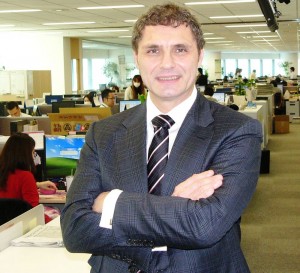
“My advice to the JETs is, don’t be afraid to take center stage and be memorable (of course in a respectful way), because these seemingly random relationships or encounters can be the source of great opportunity.” (Courtesy of Culcon.jusfc.gov)
By Alexis Agliano Sanborn (Shimane-ken, 2009-11) for JQ magazine. Alexis is a graduate of Harvard University’s Regional Studies—East Asia (RSEA) program, and currently works as an executive assistant at Asia Society in New York City.
As a martial artist, Monbusho Fellow, JET, consultant and CEO, there seems little that Harry Hill (Gifu-ken CIR, 1987-88) has not done or experienced when it comes to U.S.-Japan relations.
Now, Hill can add another feather to his cap: last February, the Japan-U.S. Friendship Commission and CULCON (the Conference on Cultural and Educational Interchange) in Washington, D.C. appointed him has their new chairman. For those familiar with Hill and his history, this appointment comes as no surprise: Hill knows Japan as intimately as he knows America. He began his career there as a Monbusho English Fellow in the mid-’80s and then served as a JET in Gifu Prefecture, experiences that helped him to tap into hitherto unexplored entrepreneurial sectors, in particular sports-related infomercials.
Since 2006, his company, Oak Lawn Marketing has been the largest infomercial brand in Japan. If you’ve seen Billy’s Bootcamp advertised there, you have Hill to thank for. Now back stateside, Hill uses his broad background in education, culture, business and non-profits to further strengthen interpersonal understanding between the U.S. and Japan. JQ caught up with Hill at his new digs—asking about life, opportunities and the risks that inevitably lead to his success.
Could you explain your background with Japan?
I developed a passion for martial arts, budo, and Shorjinji Kempo, in particular, during my time at college. This passion creates a curiosity and interest in Japan. During the summer of my sophomore year, I spent several weeks imagining my future. One of the books that influenced me at the time was Japan as Number One by Ezra Vogel. Looking around my immediate peers and acquaintances, I knew very few people who knew about Japan or could be considered Japan experts. Yet, many smart and respectable people were stating that Japan and Asia was the next land of opportunity. So I decided to start Japanese language training in my junior year with the intent of finding opportunity in Japan.
How did your time as a Monbusho English Fellow and JET lead to a career as an entrepreneur?
I was an MEF in Gifu Prefecture from 1985-1987 and the first CIR in Gifu during the first year of the JET Program from 1987-1988. As an MEF, I worked at both the kencho and kyoiku center. At the kyoiku center I helped put together teacher training programs for English teachers. In my two years in Gifu, I probably met and helped with training probably almost every junior high school or high school teacher in Gifu. I was also essentially a one-shot teacher. During my two year stint, I visited something like 230 of about 240 junior high schools and high schools, hence my job was more of a cultural ambassador who offered exposure to the English language and U.S. culture.
In 1988, Gifu hosted a regional exposition “Mirahaiku.” Since I also had a desk at the kencho, I was asked by the general affairs division to make the English name for the expo, which I named “Future Watch ’88.” The English name received a significant amount of press coverage, more from local media and to a lesser extent English language media, but inspired the organizers that the expo should have an international flavor. As a CIR from 1987-1988, some of my main responsibilities was to work for the planning organization for the expo, which was a hybrid of individuals seconded from both business and government. The expo was a great success, and the network of business leaders and government leaders with whom I worked side by side gave me the confidence that I could do business and open doors if I started my own business.
JQ Magazine: J-POP Summit Festival Returns to San Francisco with Music, Fashion, Film
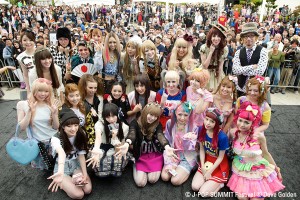
The annual J-POP Summit Festival returns to San Francisco July 19-20, featuring special performances from May’n and Tokyo Girls’ Style. (Dave Golden)
.
By Sam Frank (Wakayama-ken, 2004-06) for JQ magazine. Sam is the webmaster at the Jewish Community Federation in San Francisco.
Japan is a country that likes to borrow from another culture and make it their own. Punk rock, Spaghetti Westerns, and baseball are just a few things Japan has adopted over the years, and in 2009, the J-POP Summit Festival in San Francisco added a bona fide community event to that list. Similar to Coachella, Lollapalooza, and Outside Lands, the J-POP Summit Festival is an annual street fair held in the City by the Bay that celebrates Japanese popular culture. By introducing the latest in Japanese music, film, art, fashion, gaming, anime, food, as well as niche subcultures, the festival has become a prominent platform to showcase the latest trends and creative innovations from Japan.
“POP is our tradition” is the theme this year’s J-POP Summit Festival, which will be held in San Francisco’s historic Japantown district the weekend of July 19-20. Last year’s event welcomed more than 80,000 attendees, making it one of the largest Japanese festivals in the United States. While Japan is participating in America’s summer festival tradition, it has found a way to distinguish itself from the pack. Bringing together food, fashion, entertainment, and film promises to give the people of San Francisco a lasting impression of Japanese culture.
“Each year we strive to present a compelling mix of the hottest entertainment trends happening in Japan right now, and the J-POP Summit has become a wonderful and unique composite of pop and rock music, edgy kawaii-inspired fashion, modern graphic art, and film and anime content,” says Seiji Horibuchi, president/CEO of NEW PEOPLE, Inc. and chairman of the J-POP Summit Festival. “This year’s event promises to be another important milestone for the evolution of J-pop culture and its fan base in the U.S.”
JETs Carry on Taylor’s Legacy in Miyagi
Originally posted on the JETAA USA website:
Donated Books from Ambassador Kennedy Translated into Japanese
Following Ambassador Kennedy’s donation last November of 110 books to the Taylor Anderson Reading Corner at Mangokuura Elementary School in Ishinomaki, the volunteer group that reads to the students there, Soyokaze no Ohanashi (The Gentle Breeze Talks), joined together with the Miyagi International Association (MIA) and current JETs in the prefecture to translate nine of these books into Japanese. The books chosen cover various topics such as the lives of children in the US and other countries around the world, science, and wildlife, and are simple enough to be accessible to younger students.
Ms. Kyoko Sasaki, from Soyokaze, reportedly first reached out to Mr. Andre Perez to ask for his support for the project. Andre, who is currently a Coordinator for International Relations with Miyagi Prefecture and MIA, took on the planning of the event, coordinating details between MIA and Ms. Sasaki. Once these were settled, he reached out to Miyagi JETs through his position as a Prefecture Advisor and tapped into the Miyagi AJET(MAJET) network through Ms. Tanya Zolotareva, another CIR and a MAJET officer. The various groups collaborated, with each taking responsibility for different steps of the process of selecting books, translating them, and affixing the translations. The whole undertaking reportedly went quite smoothly, thanks to MIA’s previous experience with translating books, the eight JETs and roughly 10 other people who volunteered their time and talent, and Mr. Perez’s connections to both MAJET and MIA.
The project was also profiled on Miyagi Prefecture’s Facebook page (https://www.facebook.com/visitmiyagi) and in the Asahi Shimbun and Kahoku Shimbun.
The books will now be available to students at Mangokuura E.S. to look at any time and they will be able to work on their understanding of the English texts by referring to the new Japanese translations. Having prepared translations at hand will also make it easier for the volunteers who read to the children.
As Ms. Sasaki, who is also a friend of the Andersons, having known Taylor, said in talking with one of the local newspapers that reported on the story, “This is a way to express our thanks to Taylor’s family. We want to show them that we are continuing Taylor’s legacy by carrying on her work.”
JapaneseLondon.com April Newsletter
 Here’s a link to the latest JapaneseLondon.com April Newsletter. This wonderful site is run by JET alum Vanessa Villalobos.
Here’s a link to the latest JapaneseLondon.com April Newsletter. This wonderful site is run by JET alum Vanessa Villalobos.
http://us5.campaign-archive2.com/?u=7bc6ccc938e02760a959b1d91&id=60f2abc5ca&e=d52cd058ae
JQ Magazine: JQ&A with Cade Mosley on His Return to Japan with Rotary International
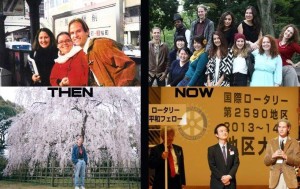
“In my experience, Japan is going through an interesting evolution these days. It’s starting to take a more assertive role in international affairs and taking more of a stand for human rights, development, and peaceful relations. This also makes it a very interesting time for Westerners to be engaged in Japan more than ever before.” (Courtesy of Cade Mosley)
By Mark Flanigan (Nagasaki-ken, 2000-04) for JQ magazine. Mark is a program director at the Japan ICU Foundation in New York City and was also a Rotary Peace Fellow at ICU from 2010-12, during which time he volunteered for a tsunami relief mission in Ishinomaki after the terrible 3/11 tragedy. In addition to his JET and Rotary service, Mark has also been a U.S. Army officer, Presidential Management Fellow, Pacific Forum CSIS Young Leader, Eisaku Sato Memorial Essay Contest prize winner, and Aspen Institute Socrates Program Seminar scholar. His interests lie in international education, disaster response, and post-conflict peacebuilding. He can be contacted at mflanigan[at]jicuf.org.
Christopher Cade Mosley (Nagasaki-ken, 2000-01) is a current Rotary Peace Fellow at International Christian University (ICU) in Tokyo and previously served as a JET for one year. Born in Texas and raised mostly in Fort Worth, Mosley attended the University of Texas at Austin, majoring in government and philosophy. He also spent a semester abroad in Haifa, Israel and interned for Congressional House Majority Leader Dick Armey in Washington, D.C. He was also on student government for their department (Liberal Arts), chairing the committee on study abroad. In this exclusive interview, JQ caught up with Mosley to discuss his lifelong interest in politics and international affairs.
Thanks for your time and for answering our questions, Cade! Would you please tell everyone about your time on JET?
I was a JET in 2000-01 on a long, thin island called Tsushima in Nagasaki, but physically closer to the city of Fukuoka, nestled in the strait between the cities of Pusan and Fukuoka. Tsushima is famous for a decisive sea battle Japan won against Russia in 1905 that first put Japan on the map as a world power and set its course into the 20th century. There’s a massive Russian battleship sunk just off the coast from my apartment there! (Too deep to see, though.) I taught for the second largest district, called Mitsushima, on the south end of the island.
What was your JET role?
I was an ALT at four schools in my district, spending a week in each so that I would rotate through all four in a month. I spent Monday through Thursday assisting the teacher with the lesson, usually coming up with some creative activity or role play to complement the lesson, and Fridays at our BOE.
Did you have any previous background in Asian languages and cultures?
I actually was accepted to JET while I was teaching English in Seoul, South Korea, and my friends there insisted I take the opportunity. Before Seoul, I didn’t have any experience. My whole reason for going to Seoul and applying to JET were because I had zero experience with Asia and thought it would be a good chance to get to know the region, since I was already interested in international affairs at that time.
JQ Magazine: JQ&A with Photographer Wei Yuet Wong on ‘The Fukushima Project’
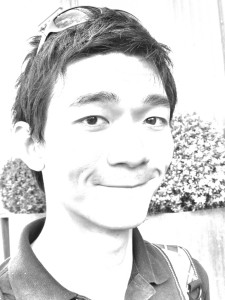
“Though people have told me no one wants to see disaster photos anymore, I think it’s a good reminder because it’s barely three years, and already people are forgetting. Not only outside Japan, but within Japan itself, people are forgetting. It’s true that people need to move on and rebuild their lives, but there’s still so much more work to be done in Tohoku.” (Courtesy of Wei Yuet Wong)
By Nathalie Ng (Shizuoka-ken, 2010-11) For JQ magazine. A member of JETAA Singapore, Nathalie was an inaka JET and her time in Japan has taught her to appreciate the flowers by the roadside and how to snowboard.
Wei Yuet Wong (Nagano-ken, 2008-10) left his home in Singapore to join JET following a summer homestay in Hiroshima. He went there because of the history as he’d learnt about the devastation during World War II, and he was particularly interested in seeing how the city had progressed since then. The relationship formed with his homestay family inspired him to join JET.
Assigned to three different schools in Ueda City, during his first few months he was often left feeling clueless and dependent on his supervisor due to the language barrier and the office hierarchy, but he soon got better at it by keeping an open mind and adapting. He is particularly proud that he was able to inspire in his students that they didn’t have to speak English with an American accent to be understood, and this has helped them to be more confident, speaking out during and outside of classes. (In fact, one of Wong’s former students even visited him and his family during the Chinese New Year.)
Since returning from Japan Wong has been working as a corporate warrior, but since last year he has finally taken the leap to pursue his photography interests. His work is now on display in a new exhibition called The Fukushima Project, which runs through 14th February at Select Books in Singapore on 51 Armenian Street. Through special postcards available for sale, visitors can write messages to the people of Hisanohama in Iwaki, which will then be collected and sent to them to let them know that their story has not been forgotten.
In this exclusive interview, JQ spoke with Wong about his visits to Fukushima before and after the 2011 Tohoku earthquake and tsunami, and the relationships he’s made with the locals through his numerous community activities.
You were posted to Nagano-ken and you lived there before the quake happened. What was your motivation for this exhibition?
I felt awed and hopeless when I first looked at the videos of the earthquake, perhaps like so many people around the world. Then why Fukushima? I think there may be three explanations. One, I first visited Fukushima in 2009 to visit friends, so I got to see Fukushima before the disaster. It was quite a different place.
Two, I have friends in Fukushima, and they live in Koriyama city, about 45 km away from the Fukushima No. 1 nuclear power plant. I was concerned about them. I was curious to know how they felt on the day of the earthquake, and then during the subsequent confusion about the nuclear power plant. I also wanted to see how they are doing when most other parts of the world, and Japan, starts forgetting about them.
Lastly, I wanted to experience how it would be like to venture into the disaster zone. I have a need to see things for myself. To touch the soil. Walk on the sand. Smell the salty air on the Japanese east coast, and try to imagine how people felt that day.
Why did you choose this particular town of Hisanohama?
It was by chance that I discovered this town. It’s quite a story, one thing leading to another, with some fortunate chance encounters. But, the best summary is: I met a friend at Koriyama Station to listen to her account, and her experiences. After that I wanted to visit the coast, so she told me that Iwaki is where I should go. With my ticket bought, I hopped on the bus for the 1.5 hour journey to Iwaki. Once at Iwaki, I went to the local tourist office, and asked for directions to the coast. The person at the office looked quite surprised, and she pulled out a map, studied it for a moment, and said, “Maybe you shouldn’t go. We used to have nice beaches, shrines, and attractions. But now, nani mo nai (there’s nothing).” I was not put off, and she finally realised that I would still go no matter what, and she suggested why don’t I go to Hisanohama, where I can have a nice walk, and just look around. So, there I went.
In the international media, most people know about Kesennuma, Rikuzentakata and Minamisoma, but Hisanohama remains unknown. So, I think it’s nice that I visited Hisanohama. It’s a town just 31 km south of the Fukushima No. 1 nuclear power plant, along the Pacific Coast, and has suffered great damage in the tsunami.
By Mark Frey (Kumamoto, 2002-2006), mark.frey@jetaanc.org
Updated with media coverage of the visit.
Boston and New York had the honor of hosting Kumamon’s North American debut last week! Who is Kumamon you may ask? The rosy-cheeked, sack-shaped bear is the official mascot of Kumamoto Prefecture in Kyushu. Voted the top “Yuru-kyara” (cuddly mascot character) in Japan, he has taken Japan by storm and sold more than $300 million worth of merchandise in 2012 alone.
Kumamon’s remarkable success in promoting his rural prefecture across Japan–there is even an exclusive “Kumamon Goods” store in Tokyo’s upscale Ginza neighborhood–is being studied in government offices and marketing departments across Japan. In fact, no less than the Wall Street Journal has published no fewer than three articles about the phenomenon.
If you’d like to learn more about Kumamon, including what he does every day, I recommend checking him out online:
Facebook page: https://www.facebook.com/kumamotodiary.en
Home page: http://kumamon-official.jp/
Kumamon accompanied Kumamoto Governor Kabashima during his visit to Boston on Novermber 12-13, which included giving a lecture at Harvard on “The Political Economy of Kumamon: A New Frontier in Japan’s Public Administration.”
Kumamon spent time with the Boston Red Sox’s mascot, Wally the Green Monster, for what was surely an important, high-level diplomatic meeting. The full itinerary of their Boston visit can be found here, here, and here. Media coverage of their visit includes:
The lovable bear and Governor Kabashima made their way down to New York on November 14, where they paid back the compliment with a visit the Wall Street Journal. Later they visited the Consul General’s residence, as part of a special reception to promote Kyushu. JET alumni from the New York Chapter of JETAA representing all of the prefectures of Kyushu were invited to the reception. In addition to presentations on Kyushu travel, tourism and shochu, Governor Kabashima introduced Kumamon. Guests dined on Kumamoto oysters and “ekiben” prepared by the chef from Hataka Tonton, and sipped shochu from the region. Kumamon and Governor Kabashima’s full New York itinerary can be found here. Media coverage of their visit includes:
Photos of JET alumni at Kyushu Promotion event at Consul General’s residence
Governor Kabashima is an interesting person. He was an “at-risk” student who grew up poor in Kumamoto. Against all odds, through hard work and dedication he ended up earning a PhD from Harvard and becoming a political science professor at University of Tokyo. His launch of the Kumamon public relations campaign is one of the great local promotion success stories of recent times.
Kabashima has also gotten a lot done in Kumamoto, including making some real headway in repairing Kumamoto’s troubled finances (he started by cutting his own salary), trying to resolve remaining issues related to Minamata disease, and blocking Tokyo’s plans to build a huge dam in the prefecture. A very good article about his life can be found here in the Asahi newspaper. The governor introduces himself and his views in two videos, here and here.
From the start, Kumamoto Prefecture and local communities have been dedicated supporters of the JET Program. Year after year, the prefecture has been near the top of the list in hosting the most JETs, hosting around 100 this year. I myself was a Kumamoto JET. I grew to love the prefecture while I lived there, and now consider it to be my “second home.”
I encourage everyone to take some time to visit Kumamoto while traveling in Japan. The prefecture boasts some of the best onsen hot springs in the country. Aso-Kuju National Park is one of the natural wonders of the world, with its giant ancient crater that is so large that an entire volcano and six towns exist inside of it (I lived in one of them!). Kumamoto Castle is one of the three finest castles in Japan. Beautiful parks and gardens, beaches and mountains, history and culture, Kumamoto has it all!
If you are a JET alum from Kumamoto, I encourage you to join the LinkedIn Group for Kumamoto JET alumni here. In fact, I encourage all alumni to join their prefecture’s LinkedIn Group. You can find yours here. It’s a great way to stay connected with other alumni from your prefecture.
I’m glad JET alumni had a chance to welcome Governor Kabashima and Kumamon to the U.S. Congratulations on the great success of their first U.S. tour together!
JETAA Singapore’s Natsumatsuri!
Thanks to JETAA Singapore’s Eugene Neubronner (Hiroshima-ken, 2010-12) for sharing this great update:
“This is Eugene Neubronner from the JETAA Singapore Chapter committee. We recently had our own Natsu Matsuri and we’ve finally gotten around to posting up pics and a writeup. Would love it if you guys could feature it and link to it as we’re always looking for more people to come on down who are ex- and interested JETs!”
Natsu Matsuri 2013
Back in August, Singaporeans, Japanese and everyone else came together to enjoy one of Japan’s favorite events during summer, the Natsu Matsuri. While it is unfortunate that Singapore has a very controlled use of fireworks and firecrackers, that didn’t mean we couldn’t have any fun. JETAA Singapore members were out in force as well, with our own booth to drum up interest in the JET Programme.
JETAA Singapore’s booth was a collective grab bag of games and information on the JET Programme, and saw a surprisingly strong interest that threatened to overwhelm our members and committee staff on hand. Many clamored for the Japanese games we had – including a haiku contest, match-the-word and more – but others were also interested to find out more about the JET Programme, something our ex-JET members were more than happy to talk about. Here’s to hoping more people apply and discover the joys of living and teaching in Japan!
Held at the Japanese Primary School in Singapore’s Changi, the annual event sees thousands of people attending – many dressed in their own yukata. The 2013 Natsu Matsuri was the 26th to be organized by The Japanese Association of Singapore. It features dozens of stalls hawking traditional Natsu Matsuri food, games and a massive stage for performances throughout the evening culminating in a Bon Odori dance everyone’s invited to join in on.
If you happen to be living in Singapore and is an ex-JET (Singaporean or otherwise) who’s somehow not on our list, do reach out to us! We’d love to get to know more of you. JETAA Singapore holds regular events and meet-ups. Do email us at secretaryjetaasingapore [at] gmail [dot] com.
お疲れさまでした〜
Click here for the full post and to see more photos from the event: http://jetaasg.wordpress.com/2013/10/18/natsu-matsuri-2013/

